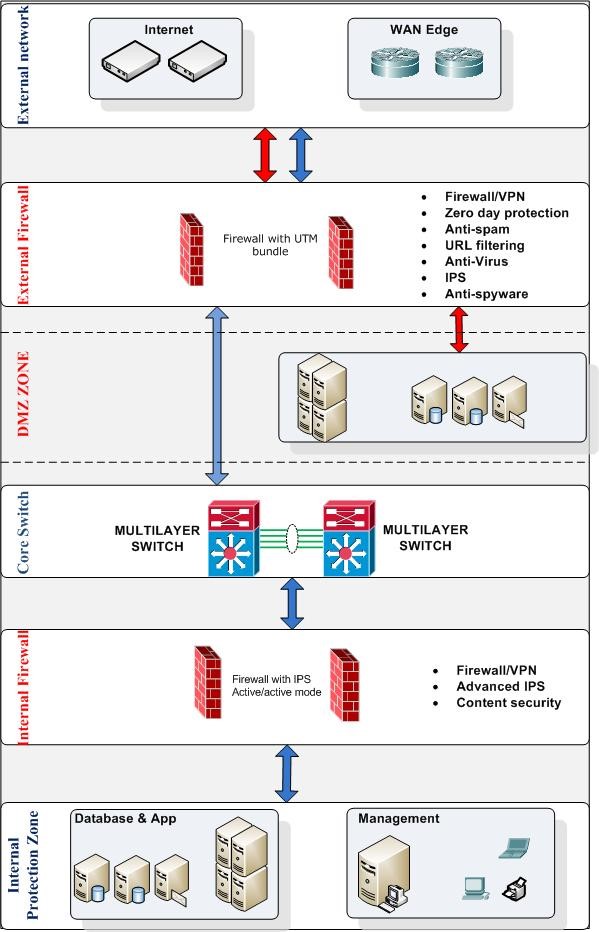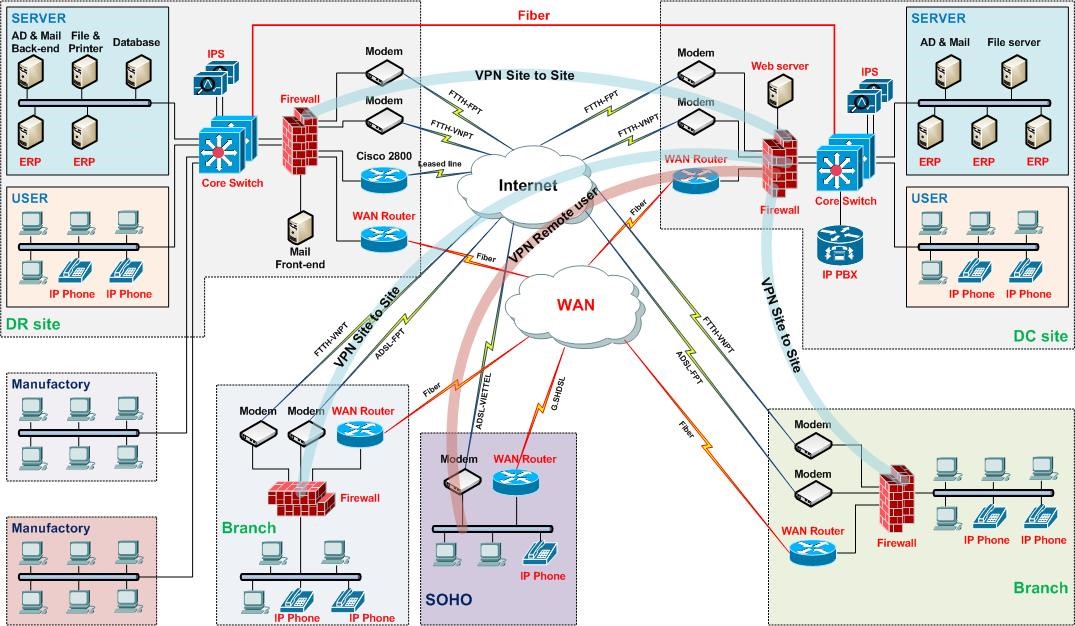WAN has the following characteristics:
- WAN is used to connect devices that are far apart by large geographies.
- WAN uses the services of service providers, such as: Regional Bell Operating Conpanies (RBOCs), Sprint, MCI, VPM internet servies, Inc., Altantes.net ...
- WAN uses many different types of serial links.
- WAN has some differences with LAN. For example, LAN is used to connect single computers, peripherals, terminals and many other types of devices in a building or a small geographical area. Whereas WAN is used to connect its branches, so that information is easily exchanged between centers.
- WAN operates mainly at Physical layer and Data link OSI model layer. WAN connects LANs together. Therefore, the WAN performs the conversion of data packets between the routers, switches and the LANs it connects to.

Following are the devices used in WAN:
Router: provides many different services, including Internet and communication
WAN.
The type of switch used in the WAN provides connectivity for video and data communications activities.
Modem: includes: communication with voice transmission service; CSU / DSU (Chanel service units / Digital service units) to communicate with T1 / E1 services; TA / NT1 (Terminal Adapters / Network Terminal 1) to communicate with ISDN (Integrate Services Digital Network) services.
Communication server: focusing on handling user calls.
The WAN data link layer protocols describe how data packets are transported between systems on a data line. These protocols are designed for point-to-point, multipoint, and multiple access switching services, such as FrameRelay.
WAN standards are defined and managed by the following international organizations:
International Telecommunication Union - field of telecommunications standards - ITUT
(International Telecommunication Union - Telecommunication Standardization Sector), formerly known as the International Telephone and Telegraph Commission - CCITT (Consultative Committee for International Telegraph and Telephone).
International Organization for Standardization - ISO.
IETF (Internet Engineering Task Force).
Electronic Industry Union - EIA (Eletronic Industries Association).






